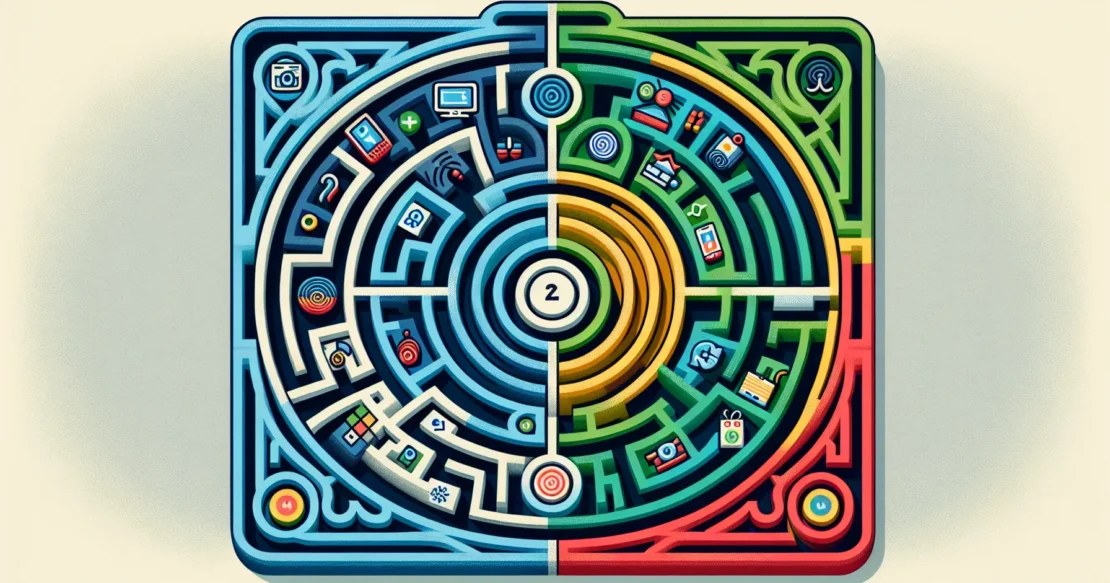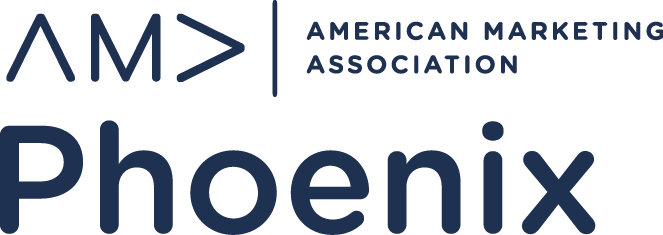- April 17, 2025
- Posted by: Featured
- Category: "Expert Roundups"

How to Create Effective Customer Journeys Through Segmentation
Customer segmentation is a powerful tool for businesses looking to enhance their marketing strategies and improve customer experiences. This article explores various approaches to create effective customer journeys, drawing on insights from industry experts. From behavioral segmentation to value-based strategies, discover how tailoring your approach can lead to more engaged customers and improved business outcomes.
- Tailor Journeys with Behavioral Segmentation
- Customize Experience Based on SEO Expertise
- Segment by Content Maturity for Targeted Messaging
- Guide Customers Through Product-Specific Journeys
- Address Unique Needs with Use Case Segmentation
- Simplify Choices with Three-Tier Product Segmentation
- Prioritize Engagement Through Geographic Segmentation
- Design Journeys Around Customer Motivations
- Craft Personalized Content with Audience Analysis
- Segment Clients by Mortgage Process Stage
- Convert with Intent-Based Customer Segmentation
- Apply Mixed Segmentation for Targeted Communications
- Improve Retention with Value-Based Segmentation
- Maximize Lifetime Value Through Device Behavior
- Personalize Experiences for New and Repeat Buyers
- Enhance Patient Engagement with Visit-Based Segmentation
- Streamline Service with Simple Customer Categories
- Tailor Solutions to Hair Loss Journey Stages
Tailor Journeys with Behavioral Segmentation
One of the most effective strategies I employ for segmenting my customer base within the Customer Relationship Management (CRM) system is behavioral segmentation. This approach enables me to target customers based on their interactions with my brand. I primarily concentrate on key criteria such as purchase history, engagement levels, and website activity. For instance, I categorize customers into distinct segments, including first-time buyers, repeat customers, and high-value or loyal clients. Furthermore, I monitor customer interactions with email campaigns and content to identify highly engaged users who may be interested in premium offers or new products.
This segmentation facilitates the delivery of personalized emails, targeted promotions, and special offers that are tailored to the specific interests and behaviors of each group. By leveraging these insights, I have observed a significant enhancement in customer retention and conversion rates, as the messaging becomes more relevant, fostering a stronger connection between the customer and the brand. This strategy ensures that each customer feels acknowledged and valued.
 Matthew Ramirez
Matthew Ramirez
Founder, Rephrasely
Customize Experience Based on SEO Expertise
Customer segmentation may seem simple on the surface, but when you tailor it to how people think, rather than just their industry, everything changes. We started grouping leads not just by company size or niche, but by where they are in their SEO journey—and that shift made our entire sales and delivery process more effective.
Some clients are just starting out and don’t even know what an audit is. Others have content teams and decent rankings but need help scaling. Then, there are the ones who come in asking about schema, crawl budgets, or site architecture right off the bat. So instead of treating every lead the same, we customize their experience based on how SEO-savvy they are.
For example, we had someone land on our site through a blog post about keyword cannibalization. Right away, we knew they were more advanced, so we skipped the intro emails and sent them a guide on advanced content siloing and internal linking structures. They booked a call almost immediately.
What we’ve learned is that segmentation isn’t about guessing who someone is—it’s about understanding where their head’s at and giving them exactly what makes sense for that moment. That’s how you build trust faster and convert better.
 Maria Harutyunyan
Maria Harutyunyan
Co-Founder, Loopex Digital
Segment by Content Maturity for Targeted Messaging
We believe that creating truly effective customer journeys hinges on understanding that not all customers are the same. Therefore, we leverage customer segmentation to divide our audience into distinct groups based on shared characteristics, needs, and behaviors. Furthermore, this allows us to tailor our messaging, content, and overall experience to resonate more deeply with each segment, making their journey with us more relevant and impactful.
One way we segment our customers is based on their “Content Maturity Level.” This considers factors like the size and sophistication of their content team, their current content creation processes, and their strategic goals for content marketing. For example, a segment we call “Emerging Content Teams” typically consists of smaller businesses or startups with limited resources and often manual content workflows. Here’s what you need to know: for this segment, our customer journey focuses on educational content highlighting the foundational benefits of structured content creation and demonstrating how our platform can streamline their initial efforts and scale with their growth. Our messaging emphasizes ease of use and quick time-to-value.
Conversely, for our “Enterprise Content Leaders” segment, which includes larger organizations with established teams and complex workflows, our journey highlights advanced features, integration capabilities, and the strategic advantages of enterprise-wide content management. This targeted approach ensures that our communication addresses the specific needs and challenges of each segment, leading to more effective engagement and higher conversion rates.
 Michael Lazar
Michael Lazar
CEO, Content Author
Guide Customers Through Product-Specific Journeys
We offer five main products, each designed to serve a specific need within our market. To maximize impact, we segment these products based on customer interests, behavior, and purchasing patterns. This segmentation allows us to guide customers through a tailored journey—from discovery to purchase—based on what resonates most with them. For example, someone who purchases Product A will receive a different email sequence than someone who showed interest in Product D, with each series offering personalized tips, upgrades, and related offers. This targeted communication helps build stronger relationships, boosts engagement, and ultimately increases conversions.
 Evan McCarthy
Evan McCarthy
President and CEO, SportingSmiles
Address Unique Needs with Use Case Segmentation
Customer segmentation isn’t about creating definitions of users with generic attributes. It’s about creating a description of the behavior and motivations that cause them to use your product in the way that they do. For instance, at our firm, we segment customers based on their exact use case, such as email marketers, eCommerce companies, and agencies. All of these groups have unique needs, and we design the customer journey to address those needs directly.
We monitor important activities, such as the tools that are initially used by the users and their patterns of usage. For example, if a user begins by importing email lists, we know they are interested in campaign optimization. We then guide them through email sequence templates, A/B test options, and best practices for maximizing open rates. On the other hand, if a user uploads multiple client workspaces, we realize they probably require collaboration features, so we highlight features such as multi-user access and reporting dashboards.
This segmentation strategy enables us to design customized onboarding experiences that cut through the noise. By addressing the unique needs of each segment from the beginning, we reduce friction and produce improved results. It’s worth continuously refining your segmentation with fresh insights and activity data. If you’re not continually tuning your customer journey based on real user behavior, you’re missing out on a huge opportunity for conversion and retention optimization.
 Josh Bluman
Josh Bluman
Co-Founder, Hoppy Copy
Simplify Choices with Three-Tier Product Segmentation
The commonly used method to create customer segmentation is to categorize your products into three levels, such as Basic, Intermediate, and Top Tier. Examples include Apple utilizing this tactic for their line of iPhones with Standard, Pro, and Pro Max, and car companies offering standard and luxury lines of car options for customers to choose from.
The best part of utilizing this method is that it can be applied to almost every product and service across almost any industry. This tactic also comes with the added benefits of being simpler for customers to understand different price points, highlight features, and differentiate between product lineups.
This method also allows you to funnel customers to pick a specific product segment by creating two other options that aren’t as attractive as the targeted product segment. It allows customers to feel they have gotten the best value and increases the rate of conversions for the business.
 Wan Ting Tan
Wan Ting Tan
Owner of Springboard, SpringBoard
Prioritize Engagement Through Geographic Segmentation
Customer segmentation fuels the prioritization necessary to engage properly. Knowing your customers’ specific requirements enables you to provide tailored experiences. This is particularly important within the solar space, where varying customers have needs that need to be met with solutions depending on location, energy consumption, and budget.
For instance, I apply geographic information to determine where solar energy is in high demand. In certain places, customers might be more interested in saving money, while in others, sustainability would be key. We design distinct messaging for these differences, with each segment receiving the appropriate message. For home customers, we highlight monetary savings and energy conservation. For commercial customers, we highlight the scalability and efficiency of solar installations. These customized experiences boost conversion rates and long-term customer loyalty.
Segmentation by lifecycle stages of the customer further refines the approach. Whether it’s teaching a new lead or providing ongoing support to a current customer, each step of the process demands a different touch. Capitalizing on this method, we can provide the right solutions at the right time, enhancing satisfaction and better outcomes. This method enables us to address each customer’s unique requirements without overwhelming them with unnecessary information.
 Phill Stevens
Phill Stevens
Founder & CEO, Avail Solar
Design Journeys Around Customer Motivations
We utilize customer segmentation as the fundamental aspect of creating targeted and meaningful customer journeys. Our analysis extends beyond basic demographics to include psychographics and behavior patterns, as well as specific customer pain points. For example, we segment customers based on their primary motivation for trying our FlexBeam device: some are biohackers looking to optimize performance, others are dealing with chronic pain and seeking relief, and a third group is more wellness-focused, using it for general recovery and self-care.
We design specific customer journeys for each segment according to their particular mindset and needs. Biohackers receive comprehensive scientific content and performance testimonials, while users with pain receive empathetic messages alongside real-user experiences and clear explanations about red light therapy’s healing benefits. Personalizing our messaging and content to fit each segment generates meaningful experiences that boost engagement and loyalty while improving conversion rates.
 Even Fusdahl Hulleberg
Even Fusdahl Hulleberg
Chief Marketing Officer, Recharge Health
Craft Personalized Content with Audience Analysis
We leverage customer segmentation by deeply analyzing audience data to categorize consumers based on interests, behaviors, demographics, and engagement patterns. This enables us to craft personalized influencer-driven content, tailored precisely to each segment’s preferences and needs.
By mapping content to specific audience groups, we enhance relevance throughout the customer journey, increasing engagement and driving higher conversion rates, ultimately resulting in stronger connections and more successful campaigns.
 Joanna Hughston
Joanna Hughston
Head of Marketing (Uk/Us), The Goat Agency
Segment Clients by Mortgage Process Stage
I split my customers into groups based on where they are in the mortgage process. Someone who’s just curious about their borrowing power gets very different emails than someone who’s deep in the application stage. Then I’ve got another set of messages for clients who’ve already settled, where the goal is more about staying in touch and helping them prepare for things like fixed-rate expiry or refinancing opportunities.
One example that works really well is tagging clients as either first-home buyers, upsizers, or investors. Each one of those has a different mindset and different questions. First-home buyers want guidance. Upsizers care more about timing and bridging. Investors are looking at returns and strategy. I write for each group like I’m talking to them directly, which keeps engagement high and makes the whole process feel more personal.
 Shaun Bettman
Shaun Bettman
Chief Executive Officer, Eden Emerald Mortgages
Convert with Intent-Based Customer Segmentation
Customer segmentation is the backbone of crafting high-converting journeys because generic messaging rarely moves the needle. We segment based on behavioral data, intent signals, and lifecycle stage—not just demographics.
Customer segmentation starts with understanding intent—not just who someone is, but what they’re actively looking for. We dig into search behavior, which pages they engage with, and where they drop off in the conversion funnel. A visitor searching for “local SEO services” is signaling immediate need, so we prioritize direct consultation offers. Meanwhile, someone reading “how to improve organic traffic” might still be researching, so we guide them with educational content and social proof before pushing for a sale.
Behavioral data also plays a huge role. Using tools like Hotjar and GA4, we identify patterns such as repeat visits, scroll depth, or abandoned carts. For e-commerce clients, we’ve seen success with dynamic retargeting ads that adjust based on real-time behavior—like showing a live inventory count to users who hesitated at checkout or highlighting a recently viewed product with a limited-time discount.
Finally, lifecycle stage determines how aggressive or educational the journey should be. A SaaS user on a free trial gets hands-on tutorials and support docs to drive activation, while a long-term customer might receive targeted upsell campaigns for premium features they haven’t adopted yet. For a B2B legal tech client, we saw a 37% lift in conversions just by splitting messaging between solo practitioners (who cared about efficiency) and mid-sized firms (who prioritized compliance integrations). The real magic happens when you treat segments as living categories—constantly refining them based on fresh data, not just sticking to a fixed playbook.
 Paul DeMott
Paul DeMott
Chief Technology Officer, Helium SEO
Apply Mixed Segmentation for Targeted Communications
All of our clients operate within the same core industries (construction, manufacturing, and engineering), but their needs vary significantly depending on factors like company size, location, and which of our services (recruiting, staffing, payroll, owner’s representation, etc.) are most relevant to them. That’s why effective customer segmentation is essential at every stage of the journey.
We use a mix of firmographic, geographic, and behavioral segmentation depending on the context. For example, we often apply behavioral segmentation when sending check-in messages to past or current staffing and recruiting clients who don’t have active projects. These messages are typically triggered after a period of inactivity, informed by each client’s historical hiring patterns.
For broader communications (such as newsletters, job alerts, or case studies), we rely more heavily on firmographic and geographic segmentation to ensure content relevance. This targeted approach improves engagement by aligning messaging with each client’s specific context and priorities.
 David Case
David Case
President, Advastar
Improve Retention with Value-Based Segmentation
Customer segmentation is essential to create personalized and successful journeys. With an understanding of the different behaviors, needs, and wants in each group, you can make your strategy bespoke to deliver highly relevant experiences. Segmentation allows you to know your most valuable customers, and at the same time, attend to other people’s needs, which results in the highest engagement and conversion.
For instance, we classify our customers into various segments such as high-value customers, repeat customers, and one-time customers. This helps us create content and communications on an individual basis. High-value customers receive special promotions and loyalty points so they are made to feel special and stay engaged. Repeat customers are courted with product recommendations and customized communication that keeps them returning. First-time customers are exposed to our brand via informative content, with rewards for completing their initial order. This has seen conversion rates and customer retention significantly improve.
Customer segmentation does not have to be a one-off exercise. It’s best to keep reviewing data and adjusting your strategy as customer needs change. This way, you’re ensuring your marketing initiatives stay in sync with your audience’s expectations and reap long-term benefits.
Maximize Lifetime Value Through Device Behavior
Customer segmentation transforms broad audiences into actionable groups, enabling you to execute precise marketing plans. Through behavioral, demographic, and transactional data analysis, you can align messages, promotions, and engagement strategies with customer needs. Segmentation ensures that marketing efforts create quantifiable results rather than shooting in the dark with little payoff.
One approach is segmenting based on device trade-in behavior. Customers who frequently upgrade their devices respond better to upgrade reminders and trade-in incentives early. Others, who only trade in when a device breaks, need repair-based messaging. Understanding these patterns allows for targeted outreach, increasing engagement and conversion rates.
Behavior-based segmentation also improves digital advertising. Customers who browse pricing pages but do not complete a trade-in can be retargeted with urgency-driven messaging. Those who have completed trades multiple times can receive loyalty-based incentives. This approach ensures that every customer touchpoint feels relevant, reducing friction in the journey and maximizing lifetime value.
 Alec Loeb
Alec Loeb
VP of Growth Marketing, EcoATM
Personalize Experiences for New and Repeat Buyers
Customer segmentation, the method of delivering personalized marketing and generating conversions, makes customizing experiences that lead to sales possible. The most crucial aspect is using data to identify trends and match messaging with specific customer needs.
An effective segmentation approach is to separate first-time buyers from repeat buyers. First-time buyers require more information about product quality, installation, and longevity. They respond positively to information that will help them make decisions, such as customer feedback and buying tips. Loyal customers who already know the quality of products are rewarded with loyalty incentives, special discounts, and product suggestions based on previous purchases.
For example, customer segmentation by frequency of purchase allows you to automate email flows based on their buying pattern. A first-time buyer is provided with educational content and a reward for the next purchase. A repeat buyer receives personalized suggestions and pre-launch access to new stock. This method ensures every customer receives relevant communication in sync with their journey, resulting in greater engagement and retention.
 Patrick Dinehart
Patrick Dinehart
CMO, ReallyCheapFloors.com
Enhance Patient Engagement with Visit-Based Segmentation
We use customer segmentation to simplify patient communication and improve consistency. People respond better when messages match their habits. We group patients by visit history, treatment type, and responsiveness. This helps us decide what to send, how often, and through which channel. It also reduces unnecessary messaging and confusion.
For example, we send different follow-ups based on how recently someone visited. Patients who stay on schedule get check-in updates. Others receive more straightforward reminders focused on getting them re-engaged. Content is adjusted by interest—some receive updates on new services, and others get tips focused on basic care. These small shifts improve clarity and reduce appointment gaps.
Since using this approach, we’ve seen higher scheduling rates and fewer missed visits. Patients respond faster and ask more focused questions. Segmentation doesn’t make care complex. It makes it clear. Matching the message to the person helps everyone stay on track.
 Dr. Vidya Colospate
Dr. Vidya Colospate
Dentist, McLean Healthy Smiles
Streamline Service with Simple Customer Categories
We keep it simple. Three segments: reactive, preventive, and commercial. Reactive are the emergency calls—people who already smell mold or see black spots on drywall. Preventive clients are proactive homeowners looking to avoid those nightmares. Commercial clients manage buildings or rentals and need compliance.
Reactive users get urgency-driven CTAs, phone-first options, and 24-hour service messages. Preventive ones get checklists, home air quality tests, and seasonal email reminders. Commercial accounts get inspection schedules, report templates, and moisture tracking tools. Each group triggers different workflows. The most aggressive follow-up cadence goes to reactives. They convert fastest and need the most hand-holding. It works every time.
 David Struogano
David Struogano
Managing Director and Mold Remediation Expert, Mold Removal Port St. Lucie
Tailor Solutions to Hair Loss Journey Stages
Customer segmentation is a foundation of the way we approach addressing our clients’ needs. Understanding where each individual is in their hair loss process allows us to provide more tailored solutions that result in improved outcomes.
For example, we segment our customers into primary categories based on their specific issues—whether they’re just beginning to experience hair thinning or are dealing with significant hair loss. This enables us to craft focused messaging that addresses them directly in their circumstances, whether they’re searching for preventative treatment or a more advanced restoration solution.
The majority of customers are initially seeking information. They want to understand why they’re losing their hair and how to stop the loss. We provide educational material and gentle treatments to inform them about their options. For clients who have already developed noticeable balding, we offer more advanced guidance on how to use treatments that repair the damage and regrow hair.
By considering what we’re offering and where they are in the process, we can provide them with exactly what they’re seeking, without overwhelming them with unnecessary information. This strategy has been effective in gaining the trust of our customers and making them comfortable with their choices. Customers are more likely to use the product and achieve the desired result if they are provided with relevant, timely information focused on their specific needs.
 Paul DiMuzio
Paul DiMuzio
Co-Founder, Locklab

